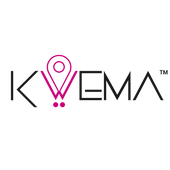Every day, workers from different industries are exposed to a variety of risks at work. This is why employee safety is still a big concern, as latest BLS data shows that a worker dies every 99 minutes from a work-related injury. The rise of technology solutions are playing a key role in overcoming different safety challenges, including the adoption of panic buttons or personal alarms for employee safety and security.
In this blog, we will discuss how the adoption of panic buttons at work impacts employee safety in different industries.

Panic buttons are a legal requirement to enhance safety at work
In some industries, having panic buttons at work is a legal requirement. For example, the goal of Alyssa’s Law is to address the law enforcement response time during life-threatening emergencies occurring at schools, like mass shootings. Unfortunately, at least 40 incidents of gunfire on school grounds have been recorded so far this year, resulting in 12 deaths and 17 injuries nationally, according to Everytown for Gun Safety Support Fund.
A similar initiative that requires panic buttons at work emerged in the hospitality industry. In September 2018, the American Hotel & Lodging Association announced the 5-Star Promise, which vows AHLA members to implement certain policies to strengthen safety and security for hotel employees and guests. Nowadays, providing a personal safety alarm for employees is a legal requirement in different states such as Washington, Illinois, and New Jersey.

A personal safety alarm adds a layer of protection to employees
Salesmen, healthcare staff, housekeeping workers, social workers, transportation workers, real estate agents and utilities workers are some examples of people who commonly work alone. Due to the nature of their activities, they can be at highest risk of experiencing a threatening situation as they are not supervised. Therefore, they can not be assisted in case of emergency. For example, installation and maintenance workers who perform their activities at heights; or nurses who are victims of physical and sexual assault.
Risks that these workers are exposed to should not be unperceived. Providing panic buttons to these employees can significantly mitigate the risk of working alone. When it comes to workplace violence, 73% of the victims who experienced nonfatal trauma from these events work in the healthcare and assistance sector, whereas 20% of deaths were sales workers and related occupations.

Not only can the adoption of panic buttons for employee protection increase the sense of safety in your workplace, but can also protect your brand reputation and reduce costs associated with injuries or legal penalties.
At Kwema we are committed to enhancing employee safety by providing discreet wearable safety devices. With the Kwema Smart Badge™, employees can easily call for help when facing a dangerous situation. They can quickly press a duress emergency button for three seconds to send an alert to the security staff and 911, saving precious time, and most importantly saving lives. Security professionals can easily provide Kwema’s wearables to their employees, as no training is required.
